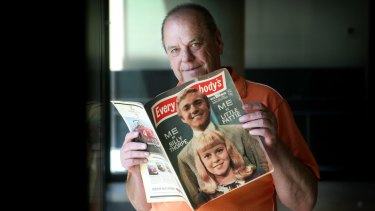Can you still find anything in op shops that is worth more than what you paid for them? Or at garage sales, or trash and treasure markets?
It often seems that even people who dump the contents of their back shed on a tarp know the exact value of everything.

You can blame this on online auction sites and smart phone apps that give you an estimated value, usually optimistic, at the click of a button. “But this is what it’s going for on eBay,” the sellers will tell you.
There are still bargains to be found, just fewer than there used to be.
For example, the $4 op shop cup that sold for more than $75,000 at a Sotheby’s Australia auction in April 2013. The astute vendor spotted this on the shelf in a Sydney opportunity shop and thought, well that looks a bit special. Very special indeed. It was a 17th or 18th century Chinese libation cup carved from rhinoceros horn. He sent photos to Sotheby’s Asian art specialist Ann Roberts who confirmed it was rare and valuable.
Despite a chip she gave estimates of $20,000 to $30,000 and wasn’t particularly surprised when it sold for $62,000 on the hammer ($75,640, including buyers premium). Similar objects have sold for about $90,000 in Australia and $200,000 overseas.
Roberts could understand why it had been given a token value by the op shop. “They don’t look immediately attractive to the untrained eye,” she says.
My eye is untrained but I got a feeling that the plain looking postcard I picked up at a market might be worth more than the dollar or two I paid for it. Date stamped August 1959 it was sent by the Dapto Railway Station advising a client that “a consignment addressed to you is at present on hand”. I sent it to Gary Watson, philately and numismatics expert at Mossgreen auctions for a valuation. His comments came as a surprise.
“By the 1950s, non-tourist postcards were an endangered species,” he emailed. “Official issues such as this are very scarce. This one is enhanced by the illustration being on the face, and featuring a [steam] train. Add to that the ‘G/NSW’ puncture on the stamp and the scarce ‘BROWNSVILLE’ datestamp.”
His estimate is that it is worth at least $50 plus at auction, possibly $100 on eBay.
“These days,” says Gary, “you can’t expect to get much of anything in the postal history field for less than $100. However, enough little nuggets turn up in unexpected places that trawling through op shops can be very fruitful. Even the local tip can produce gems.”
Gary mentions that some of his clients have made a decent living from ferreting out saleable items from unlikely sources. But you have to know what to look for. Just ask David Gazzard who runs the Nostalgia Factory in Kangaroo Valley. He’s a specialist in ephemera, which most people would describe as junk.
Case in point is a 1966 rugby league program I picked up at a market for $2. It’s in pretty ratty condition but inside are details of a Great Britain v Sydney match played at the Sydney Cricket Ground on June 11 that year. Playing for Sydney that day was an all-star cast, including Artie Beetson, Ken Irvine, Graeme Langlands, Johnny Raper and Dick Thornett. Gazzard says sporting programs are a growing market. He gives this one a rough estimate of $15 but says Grand Final programs from the golden era sell for a lot more. More valuable, fullstop, are AFL programs.
Another of my market finds was an instruction booklet for Ezy Bilt construction kits, a local version of Meccano produced in Adelaide. Of special interest is the front cover image showing two budding structural engineers building a model of the Sydney Harbour Bridge. Bridge memorabilia is a popular category so Gazzard gives this an estimate of $30. Collectors of such material include academics such as Professor Peter Spearritt who donated his massive Harbour Bridge collection to the Museum of Sydney about 10 years ago.
Sheet music can still be found in selected op shops, usually priced around the $2 mark. There are extraordinary Buy it Now prices listed on eBay including $99.95 being asked for the sheet music to Rolf Harris’ 1960 hit, Tie Me Kangaroo Down. This optimistic value may be because of Rolf’s recent notoriety.
More saleable would be the sheet music for Money, a 1963 hit for the Beatles picked up for $1. The double-page photo of the Fab Four (John and Ringo are on the back cover) is the same one used in the concert program for the Australian tour. David Gazzard says that Beatles memorabilia peaked here in 2014 – the 50th anniversary of their Australian tour – so his 2016 estimate is a conservative $30, more perhaps on eBay. It’s only in fair condition but suitable for framing…
This article is from the SMH, you can read the full article here:
How to find treasures in op shops and garage sales (smh.com.au)